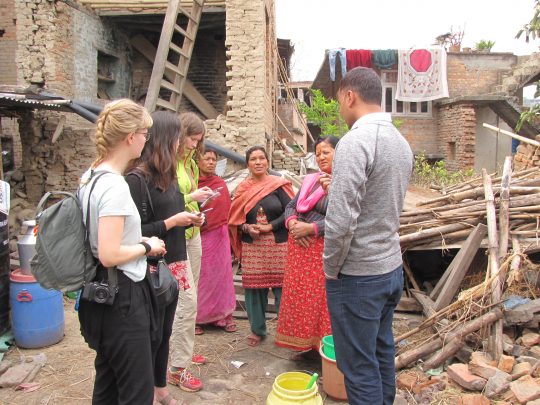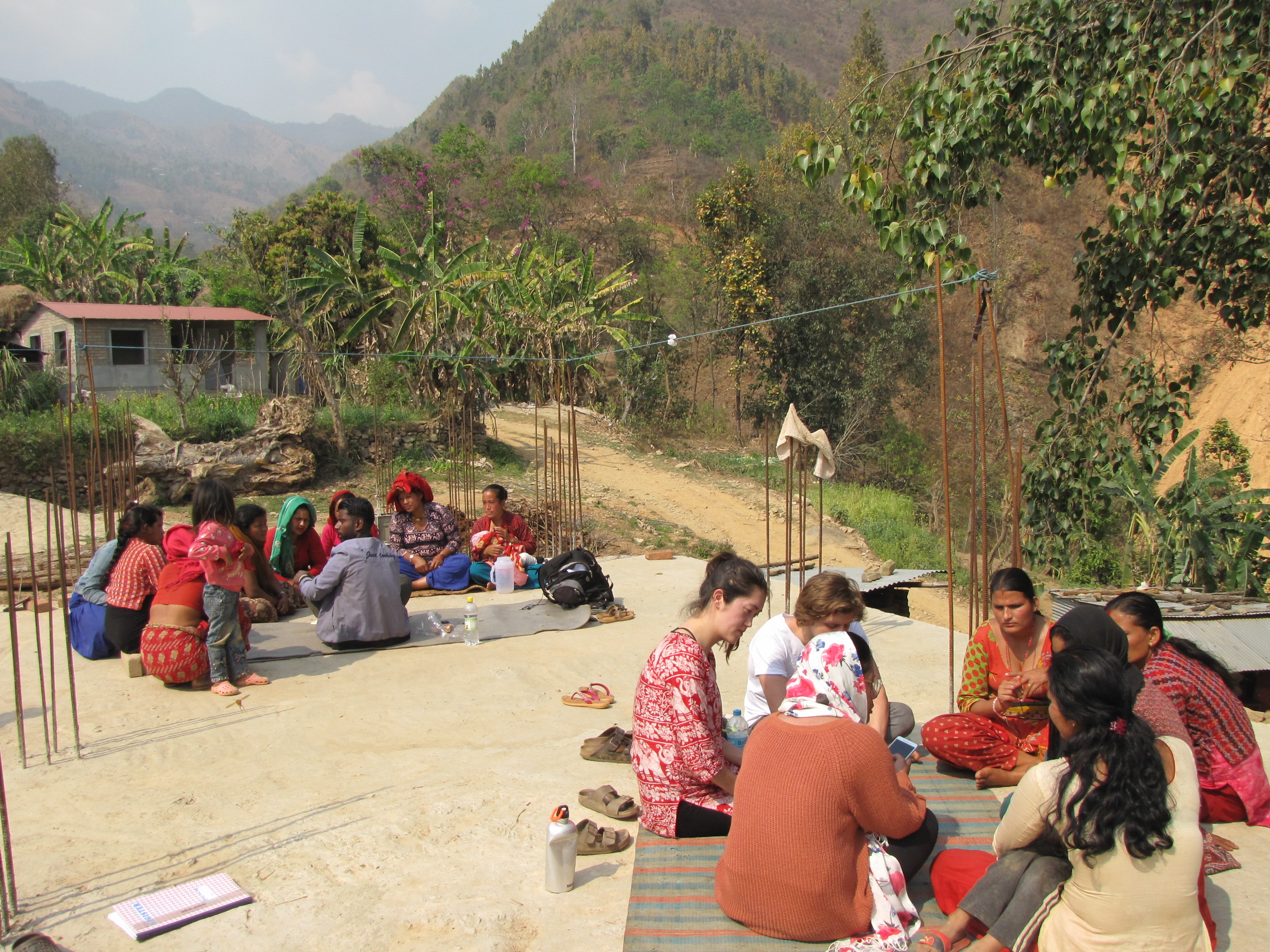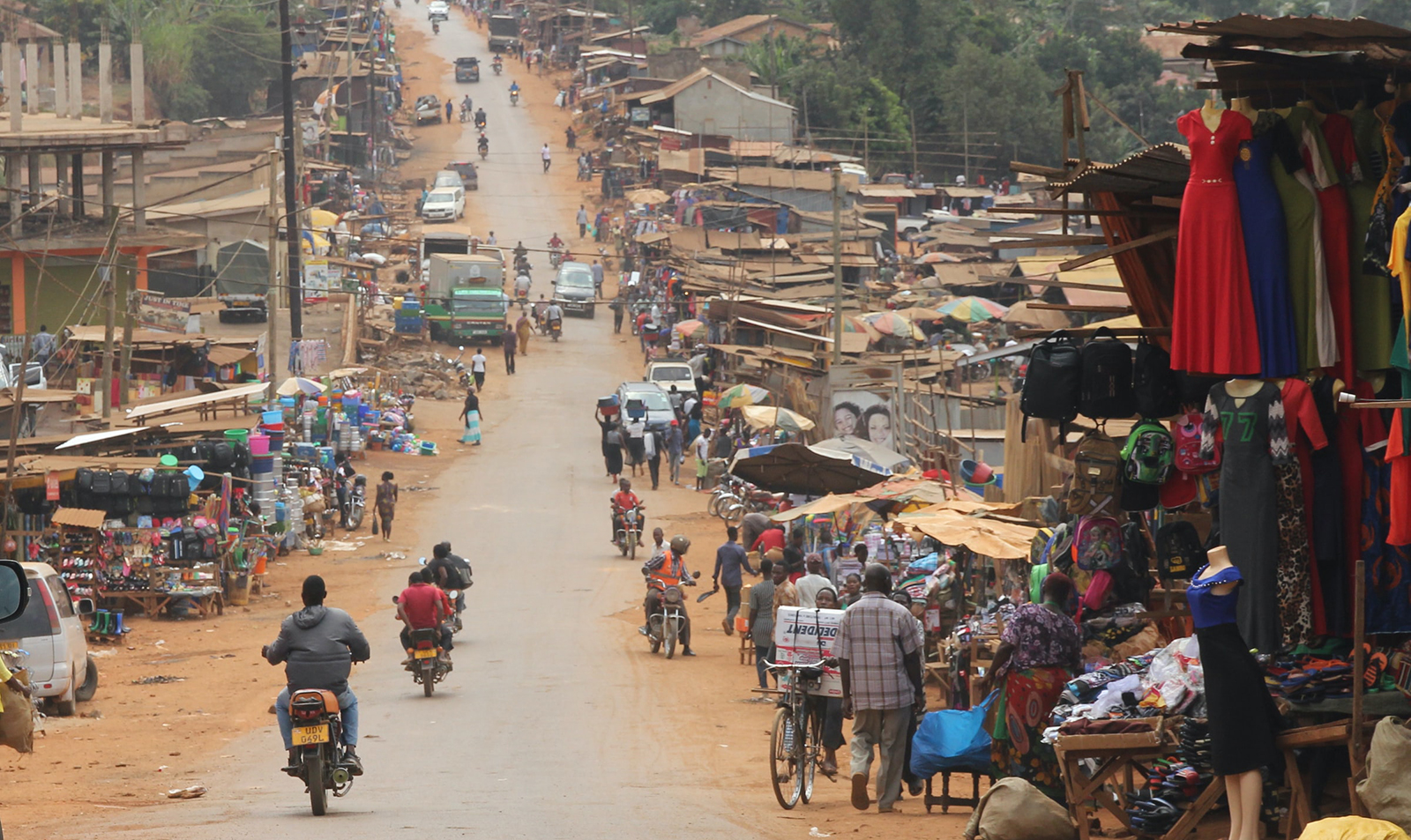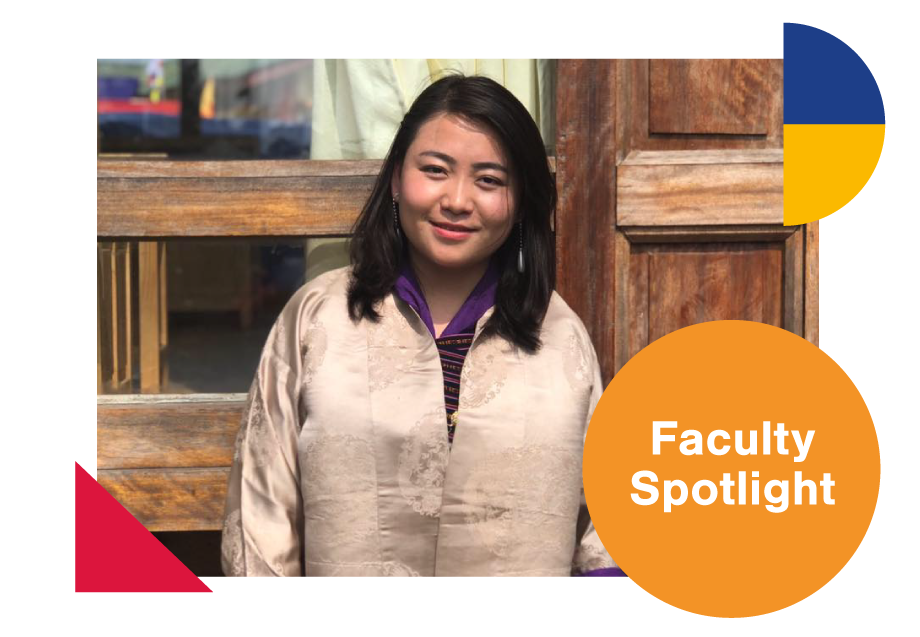Aalto’s SGT students joined forces with students from Asian Institute of Technology and Management (AITM) to study sustainable reconstruction solutions and communication practices in the aftermath of the earthquake that hit Kathmandu valley in Nepal.
In 2015, more than 8.1 million people were affected and over 605.200 houses destroyed by the earthquake in Nepal, leading to a massive reconstruction process that is still ongoing. A crucial turningpoint for recovery is the ownership that people take in the reconstruction of their homes and lives.
“During our field studies in Nepal we met amazing, resilient people, who in despite of the massive catastrophe that occurred and their losses, have continued the process of rebuilding”, says Kristjana Adalgeirsdottir, mentor of the Nepali project student team.
In March 2018, the multidisciplinary team of five Aalto’s Sustainable Global Technologies -programme students worked together with the AITM’s Civil Engineering students in the earthquake reconstruction site of ICIMOD at Dhungetar, approximately 5 hours drive north west of Kathmandu. The team met with various stakeholders involved in the rebuilding process: media, local entrepreneurs, International NGO´s such as UN Women and the Red Cross as well as reconstruction experts and affected villagers.
“In the village Dhungetar we met the newly established mothers group. The women have had a major role in the recovery of their village. They have produced construction materials, organized income activities and gathered information on building processes. This knowledge is shared in the women’s networks”, says Adalgeirsdottir.
The focus of the Nepali project is on the communication practices: sharing information about sustainable reconstruction solutions. This is an interesting and new perspective in recovery studies.
“It was interesting to see how many successful efforts in reconstruction had been implemented on the grassroots level. Supporting women’s’ livelihoods is a good example: if mothers are able to earn a living with rebuilding their homes, the entire village will benefit”, Adalgeirsdottir says.
An important finding from the field trip was that in communicating sustainable reconstruction practices, the technical aspect should be complemented with an understanding of cultural and social factors.
Sustainable building materials from soil

One of the sustainable approaches the students explored was Soil-Cement Stabilized Blocks (SCSB). This is a simple earthquake-resistant building technology, where communities can start producing their own bricks and construction materials from locally available sources: earth and sand. This building material production technique had been invented by the AITM research team.
The women in the villages had an important role in producing the building material, which contributes to rebuilding the village and giving income to the households also after the reconstruction phase.
“The long-term aim of the Nepali project is in the effort of aiding future reconstruction projects towards more sustainable, locally sensible and culturally integrated results in the recovery after natural disasters”, Kristjana Adalgeirsdottir summarises.
Nepali is a pilot project, the first project on sustainable reconstruction issues at SGT. The student team was strongly dedicated to developing their ideas, establishing necessary connections, funding and frameworks, from the scratch.
The positive experiment will hopefully develop into more extensive collaboration between the two universities and contribute to further studies on reconstruction and communication practices in recovery processes after natural disasters.
The Nepali team is now working further on the project and will present their findings togetheter with the other SGT teams in Aalto Festival, Monday 21 May at 9-12 at the Harald Herlin Learning Center, Otaniemi.
More information:
Nepali project website
Nepali project Instagram
Photos: Kristjana Adalgeirsdottir
Tags:
Nepal,
Nepali_project,
reconstruction,
students,
sustainability
This post was written by AGI




